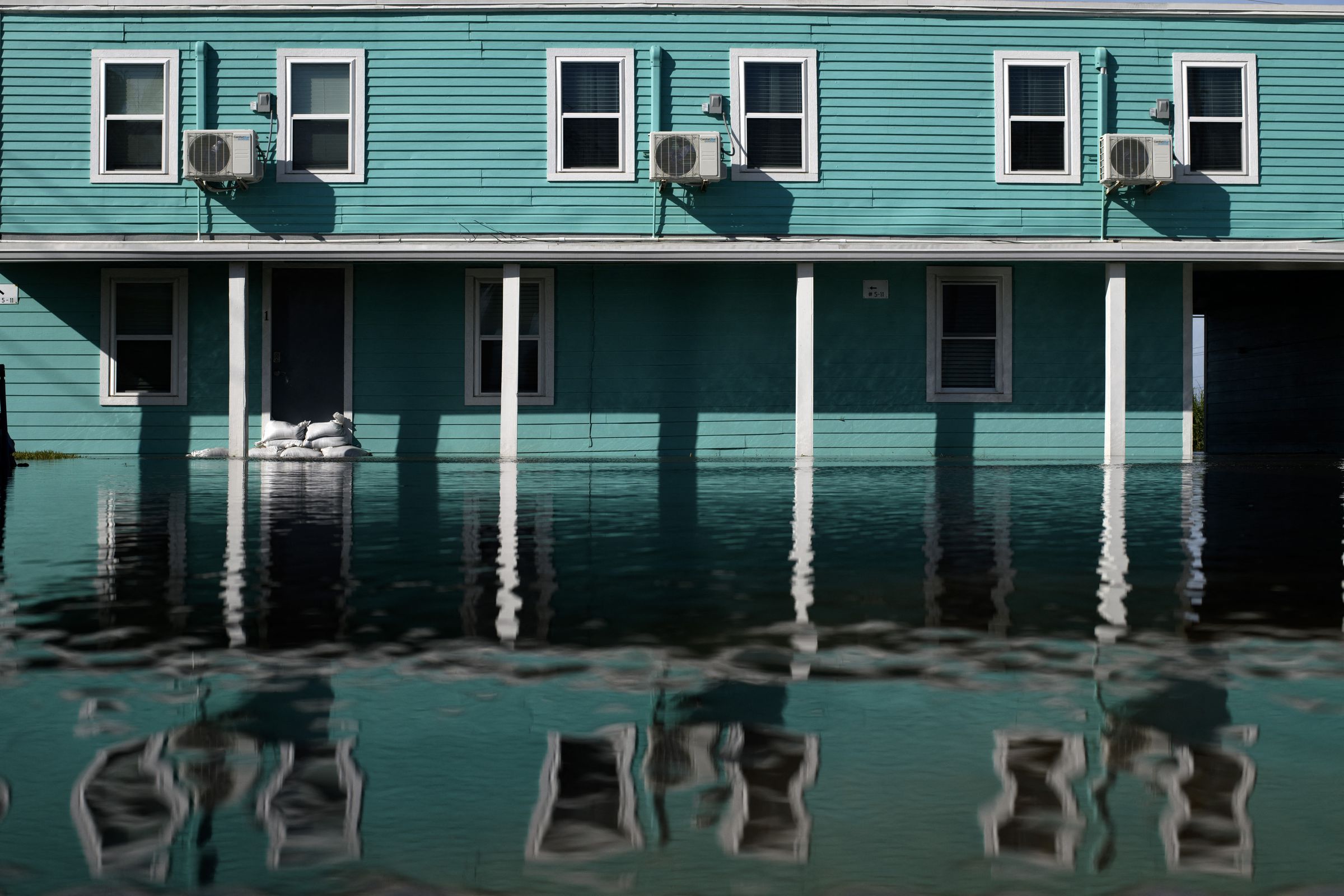Widespread power outages in the wake of Hurricane Beryl pose a new threat as temperatures soar in Texas this week.
Beryl tore through the Lone Star State yesterday, killing at least six people and knocking out electricity for around 2.7 million customers. Power was still out for more than 2.2 million on Tuesday morning. The blackouts could last days to weeks, authorities say, leaving people without air conditioning as the heat index reaches triple digits.
“The lack of proper cooling combined with many people outdoors cleaning up after Beryl could produce dangerous heat conditions,” the National Weather Service (NWS) said this morning.
“The lack of proper cooling combined with many people outdoors cleaning up after Beryl could produce dangerous heat conditions.”
Power outages are concentrated along southeast Texas, where the heat index (a measure of heat and humidity) is forecast to reach upwards of 105 degrees Fahrenheit. While that’s typically not considered risky enough for a heat advisory in the region, the lack of AC after a big storm is a game changer.
It could take “a few days” to get the power back on, Public Utility Commission of Texas chairman Thomas Gleeson said in a press conference yesterday. Parts of hard-hit Galveston could be without electricity for as long as two weeks.
Power outages in the US have grown longer than they were a decade ago — mostly because of “major events” like hurricanes and winter storms, according to the US Energy Information Administration. When more extreme weather triggers blackouts, it raises the risk of heat-related illness and death. Rising global temperatures, the result of greenhouse gas emissions from fossil fuels, make for more frequent and intense heatwaves. Higher temperatures also supercharge storms, which gather strength from heat energy at the sea surface.
Hurricane Beryl smashed records, fueled by soaring sea temperatures. It’s the strongest tropical storm on record to develop in the Atlantic this early in the hurricane season. It grew to a monstrous Category 5 storm by July 2nd, wreaking havoc across the Caribbean and Mexico before weakening into a Category 1 storm and slamming into Texas. Despite lower sustained wind speeds, Beryl brought more than 10 inches of rain along parts of the Texas Gulf Coast and a storm surge of up to six feet.
Beryl has been a foreboding omen for what’s forecast to be a very bad Atlantic hurricane season this year. The storm has weakened but will continue to be “a prolific heavy rain producer” as it moves northeast this week, according to the NWS.
Oppressive heat is also bearing down across much of the US this week, with close to half the country’s population — nearly 160 million people — under heat alerts today. Heat kills more people in the US each year than floods and hurricanes, even though those deaths can be prevented if people have a safe place to cool down. Heat deaths can also spike after storms trigger power outages, which happened in Louisiana after Hurricane Ida in 2021. More people died in New Orleans from the heat that followed Ida than the storm itself.
When several catastrophes collide, as we’re seeing now in Texas, scientists call it a “compound event” that’s becoming more common with climate change. It’s a disaster pileup that strains resources and makes it even harder to respond and recover because everything is happening in close succession or all at once.
